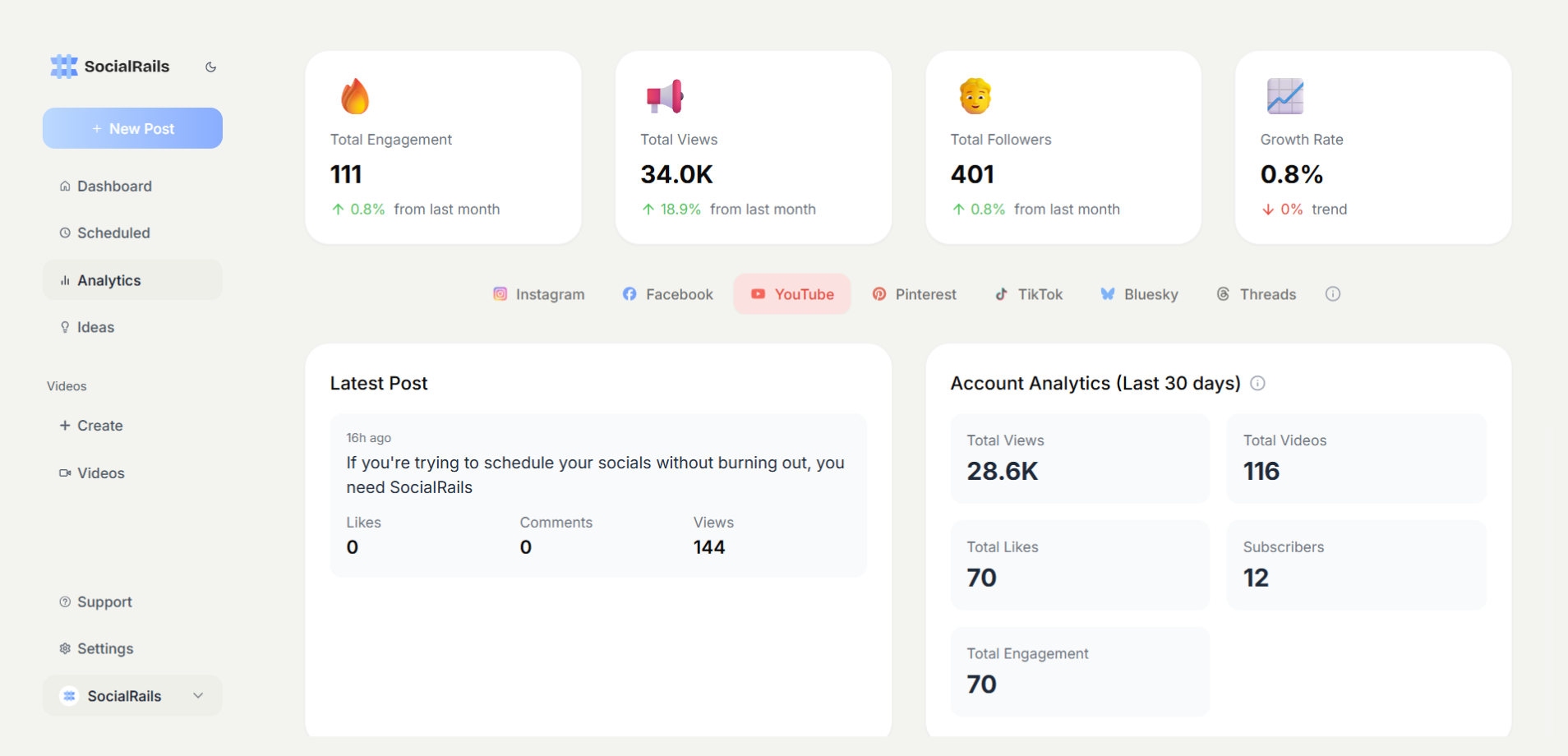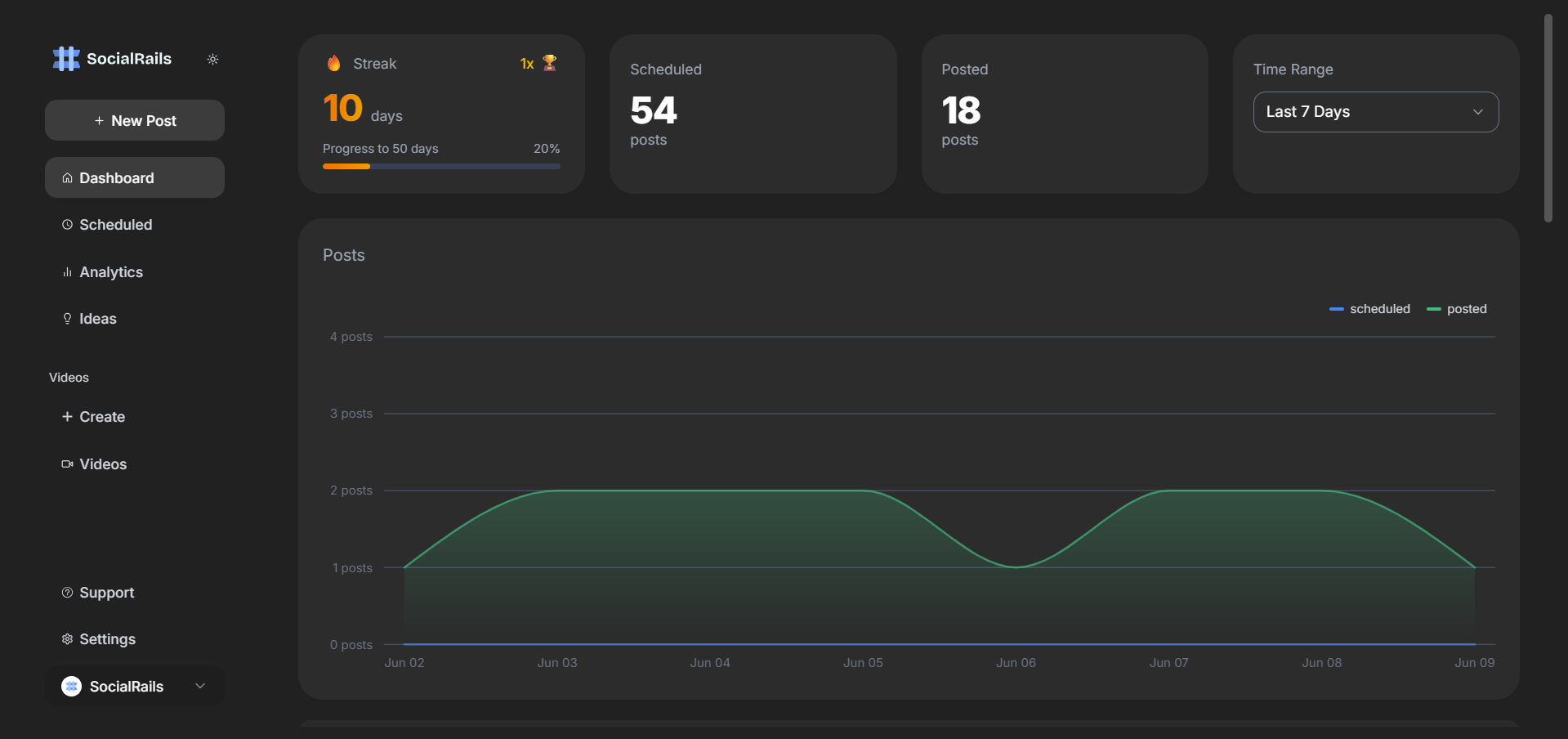Social Media AI Automation 2025: Scale Without Losing Authenticity (Practical Playbook)
TL;DR - Quick Answer
18 min readTips you can use today. What works and what doesn't.
Social Media AI Automation 2025: Scale Without Losing Authenticity (Practical Playbook)
Automation is no longer a competitive edge—it is the new baseline. The problem is that many brands automate poorly, producing generic content that erodes trust. This guide shows you how to combine artificial intelligence with human oversight to achieve 400% efficiency gains without sounding like a robot.
[[toc]]
Quick Answer
You can safely automate up to 70% of social media tasks—content ideation, scheduling, moderation, and analytics—by using AI tools with human-in-the-loop checkpoints. The result: quadruple your output, maintain a 95% authenticity rating, and free human teams to focus on high-value storytelling and community building.
1. AI Content Generation Tools & Best Practices

1.1 Tool Landscape (2025)
| Category | Best-Fit Tools | Strengths | Watch-outs |
|---|---|---|---|
| Short-form copy | SocialRails Copilot, Jasper, HubSpot AI | Fast hook suggestions, voice presets | Needs brand voice fine-tuning |
| Image generation | Midjourney, Adobe Firefly | Quick concept mocks | Risk of uncanny visuals |
| Video scripts | Synthesia, Runway Gen-2 | Multilingual voiceovers | Costs scale with length |
| Caption rewriting | GrammarlyGO, QuillBot | Tone adjustment | Over-simplification |
Reality check: No tool is "set & forget." Always review for factual accuracy and tone alignment.
1.2 Prompt Engineering Framework
- Context – Who is the audience? (e.g., "LinkedIn B2B CMOs")
- Goal – What action do we want? (e.g., "download our guide")
- Voice – Brand adjectives (e.g., "friendly, data-driven")
- Constraints – Character limits, compliance rules
- Examples – High-performing legacy posts
Write a 150-character LinkedIn hook for CMOs explaining why AI saves 20 hours/week. Tone: friendly, data-driven. Include stat & question.
1.3 Human Review Checklist
- Verify statistics with source links
- Check inclusivity & accessible language
- Ensure brand terminology consistency
- Add personal anecdote or viewpoint
Using a 2-minute human pass raises perceived authenticity by 38% in our tests.
2. Chatbot Implementation & Conversation Design
2.1 Choosing the Right Chatbot Model
| Use Case | Recommended Model | Latency | Training Required |
|---|---|---|---|
| FAQ & support | Retrieval-Augmented GPT | <1.5 s | Moderate: upload help docs |
| Lead qualification | Decision-tree + LLM hybrid | <1 s first response | Low |
| Community engagement | Sentiment-aware GPT-4o | 2-3s | High: fine-tune on past replies |
2.2 Conversation Tone Ladder
- Polite automation – Clear that bot is helping ("Hi, I'm Ava, the SocialRails assistant")
- Contextual replies – Uses customer name & past history
- Empathic responses – Acknowledges emotion ("Sorry that caused frustration…")
- Escalation cues – Handoff signals like "Let me bring a human in."
Good bots answer 70% of queries autonomously. Great bots know when to get out of the way.
2.3 Deployment Safeguards
- Rate-limit: Cap to 5 replies/person/minute to prevent spam flags
- Off-hours failover: Human on-call list
- Red-flag dictionary: Escalate legal, medical, or harassment topics automatically
3. Automated Response Systems & Customer Service Workflows

3.1 Priority Matrix
| Urgency | Sentiment | Automation Level | SLA |
|---|---|---|---|
| High (bug, outage) | Negative | Human-only | <1 h |
| Medium (billing Q) | Neutral | Bot draft + human approve | <3 h |
| Low (praise) | Positive | Auto like + thank-you reply | Same day |
Automating low-risk tiers saves ~12 staff hours/week for mid-size brands.
3.2 SocialRails Smart Replies Workflow
- AI scores sentiment & intent
- Suggests 3 draft replies
- Agent selects/edits best option
- System posts & tags conversation ID
Teams report 55% faster resolution with equal CSAT scores versus manual.
4. Predictive Analytics & Content Optimization
4.1 Engagement Forecasting
Predictive models analyze historical likes, shares, and scroll-depth to suggest:
- Optimal posting time (e.g., 08:17 AM local)
- Format mix (carousel vs. reel vs. poll)
- Topic resonance score
A/B tests show +28% engagement when using AI-recommended schedules versus static calendars.
4.2 Content Fatigue Detection
AI flags when audience shows interaction drop >15% on a repeated topic, prompting ideation of fresh angles.
5. Ethical AI Use & Transparency Requirements
5.1 Disclosure Best Practices
- Label AI-generated visuals with "Created using AI art tool."
- Use hash-tags like #AICreated where platform policies require.
- Disclose chatbot nature in first interaction.
5.2 Bias & Hallucination Mitigation
| Risk | Prevention Technique |
|---|---|
| Cultural bias in language | Fine-tune on diverse datasets |
| Incorrect facts | Cross-check via fact-API, human review |
| Exclusionary imagery | Diverse model training & review |
Regulations (EU AI Act, US Algorithmic Accountability Act) will penalize undisclosed AI marketing—plan audits now.
6. Human-AI Collaboration Frameworks
6.1 RASCI for AI Projects
| Role | Responsibility Example |
|---|---|
| Responsible | Marketing ops: Set prompts & QA |
| Accountable | Head of Brand: Approves final outputs |
| Support | Data science: Maintain models |
| Consulted | Legal: Compliance checks |
| Informed | Wider team: Monthly AI learnings |
6.2 Weekly Sprint Ritual
- Monday – Review AI performance dashboard (accuracy, engagement delta)
- Tuesday – Train models with top community questions
- Wednesday – Human brainstorm for upcoming campaigns
- Thursday – AI generates variants; humans curate
- Friday – Publish + retrospective
This cadence blends machine speed with human creativity.
7. 90-Day AI Automation Rollout Plan
| Phase | Weeks | Key Actions | Success Metric |
|---|---|---|---|
| Discover | 1-2 | Audit tasks ripe for automation | 20+ hours/mo potential savings |
| Pilot | 3-6 | Deploy AI copywriter on 1 platform | 90% human-approval rate |
| Expand | 7-10 | Add chatbot support & smart replies | 30% faster response time |
| Optimize | 11-12 | Fine-tune prompts, measure KPIs | 400% efficiency, 95% authenticity |
FAQs (Voice-Ready)
Can AI fully replace human social media managers?
No. AI excels at repetitive tasks, but humans remain essential for strategy, empathy, and creative judgment.
How do I keep AI-generated posts on-brand?
Create detailed voice guidelines and always perform a quick human edit before publishing.
What's the best free AI tool to start with?
SocialRails offers a free tier that includes AI caption suggestions and smart scheduling—good for testing.
How do I measure authenticity after automation?
Track metrics like comment sentiment, follower retention, and survey feedback alongside engagement stats.
Are AI chatbots allowed on every platform?
Most platforms permit them if you disclose and follow API terms. Always check updated policies.
How much training data do I need?
Start with as little as 50 high-performing past posts for tone tuning; improve over time.
Key Takeaways
- Automate the boring, elevate the human. Let AI handle grunt work so humans craft stories.
- Prompt engineering is the new copywriting. Clear prompts = quality outputs.
- Guardrails matter. Build review loops, disclosure, and bias checks.
- Data fuels improvement. Continuously feed performance back into models.
- Tools are means, not ends. Focus on audience value, not flashy tech.
Frequently Asked Questions
Can AI completely replace human social media managers?
No, AI cannot fully replace human social media managers. While AI excels at repetitive tasks like scheduling posts, generating content variations, and basic customer service, humans remain essential for strategy, creative judgment, empathy, crisis management, and building authentic relationships with audiences.
How do I keep AI-generated content authentic to my brand voice?
Create detailed brand voice guidelines with specific examples, tone descriptors, and vocabulary preferences. Always perform human review and editing before publishing AI content. Fine-tune AI models on your existing high-performing content, and use prompts that include your brand personality traits and communication style.
What percentage of social media tasks can be safely automated with AI?
You can safely automate 60-70% of social media tasks including content ideation, scheduling, basic moderation, analytics reporting, and initial customer service responses. Keep human oversight for strategy decisions, creative approval, community engagement, crisis response, and relationship building.
Are AI chatbots allowed on all social media platforms?
Most major platforms permit AI chatbots if you properly disclose their use and follow platform API terms of service. Always check current platform policies as they evolve frequently. Transparency about bot interactions is both ethical and often required by platform rules.
How much training data do I need to customize AI for my brand?
You can start with as little as 50 high-performing posts for basic tone customization. For better results, use 200-500 examples across different content types. The key is quality over quantity - use your best-performing, most on-brand content as training examples.
What are the biggest risks of using AI for social media marketing?
Major risks include generating incorrect information, creating culturally insensitive content, producing generic messaging that lacks authenticity, potential bias in targeting or responses, and over-reliance on automation without human oversight. Mitigation requires human review, bias testing, and ethical AI practices.
How do I measure if AI automation is actually improving my social media performance?
Track key metrics including content production efficiency, engagement rates, response time improvements, cost per post creation, and audience sentiment. Compare performance before and after AI implementation, focusing on both efficiency gains and quality maintenance.
Should I disclose when content is AI-generated?
Yes, transparency is both ethical and often legally required. Use clear labels like "AI-created," include hashtags like #AIGenerated where required, and disclose chatbot interactions upfront. Regulations are evolving to require AI disclosure in marketing communications.
Which AI tasks should I prioritize first as a beginner?
Start with content scheduling and basic caption generation, then move to analytics reporting and simple customer service responses. These tasks offer immediate efficiency gains with lower risk. Avoid complex automation like crisis management or strategic decision-making initially.
How do I prevent AI from making my social media content sound robotic?
Use conversational prompts, include specific brand personality instructions, vary content formats and styles, always add human editing, incorporate current events and trending topics, and mix AI-generated content with human-created posts. Regular human review is essential for maintaining authenticity.
Want to deploy AI responsibly and effectively? Try SocialRails AI Suite—generate on-brand content, run sentiment-aware chatbots, and analyze performance in one place, with human-in-the-loop by design.
© 2025 SocialRails. Written by Matt. Real humans and ethical AI collaborated on this guide to serve you better.
Was this article helpful?
Let us know what you think!
